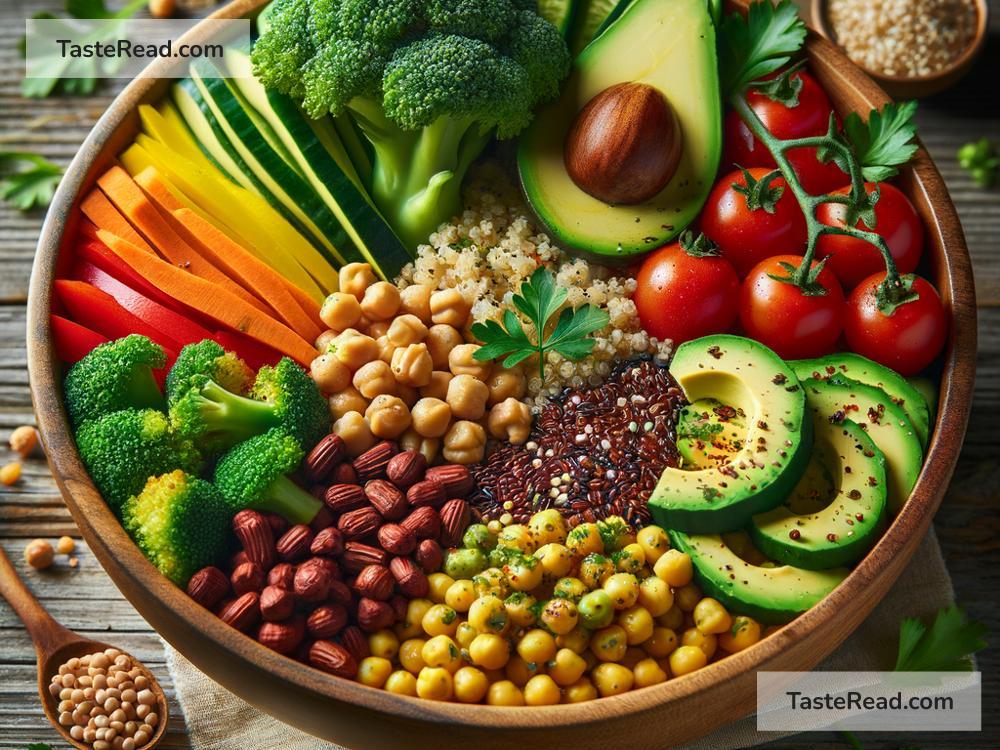Exploring the Benefits of a High-Fiber Diet
When it comes to living a happy and healthy life, the food we eat plays a big role. One of the best ways to improve your overall health is by eating more foods that are rich in fiber. Fiber is the part of plant-based foods, like fruits, vegetables, grains, and nuts, that your body can’t digest. While it may seem simple, fiber is a superfood for your gut and overall health! In this article, we’ll explore what fiber is, how it helps your body, and how to add more fiber to your meals.
What Is Fiber?
Fiber is a type of carbohydrate found in plant foods. Unlike other carbs, fiber isn’t broken down into sugar and absorbed by the body. Instead, it passes through your digestive system mostly intact. This unique quality is what makes fiber such an important nutrient.
There are two types of fiber:
-
Soluble fiber dissolves in water and forms a gel-like substance in your stomach. It’s found in foods like oats, apples, carrots, and beans. Soluble fiber can help lower cholesterol and control blood sugar levels.
-
Insoluble fiber does not dissolve in water and stays solid as it moves through your digestive system. It’s found in foods like whole grains, nuts, and the skins of fruits and vegetables. Insoluble fiber helps keep your bowel movements regular and prevents constipation.
Both types of fiber are important, and eating a variety of fiber-rich foods ensures you get enough of both.
Why Is Fiber So Important?
Fiber offers many benefits for your health. Let’s dive into some of the key advantages of eating a high-fiber diet:
1. Promotes Healthy Digestion
One of fiber’s most famous benefits is that it keeps your digestive system running smoothly. Insoluble fiber adds bulk to your stools, making them easier to pass. This helps prevent constipation and keeps your gut healthy. If you’ve ever had stomach discomfort because of irregular bowel movements, adding more fiber to your diet could be the solution!
2. Helps with Weight Management
Fiber is a secret weapon for anyone looking to maintain or lose weight. High-fiber foods are filling, which means they make you feel full and satisfied for longer. This can help you eat less and avoid overeating. Plus, fiber-rich foods tend to be lower in calories, making them a smart choice for weight control.
3. Supports Heart Health
Soluble fiber can help lower levels of bad cholesterol in your blood, reducing your risk of heart disease. It works by binding to cholesterol and carrying it out of your body before it can be absorbed. Additionally, fiber-rich foods like whole grains and fruits can help lower blood pressure, which is another way to protect your heart.
4. Balances Blood Sugar Levels
Fiber slows down how quickly sugar enters your bloodstream, which can help keep your blood sugar levels steady. This is especially important for people with diabetes or those trying to lower their risk of developing the condition. Soluble fiber, in particular, helps prevent blood sugar spikes and crashes after eating.
5. Reduces Risk of Certain Diseases
Studies have shown that eating more fiber can lower your risk of diseases like type 2 diabetes, heart disease, and even certain types of cancer, such as colon cancer. A high-fiber diet supports your immune system and helps keep inflammation in check.
6. Improves Gut Health
Fiber acts as food for the good bacteria in your gut, helping them thrive. These bacteria play a crucial role in your overall health, from digestion to immunity. By feeding them with fiber, you’re supporting a healthy microbiome, which is associated with better mental and physical health.
How to Add More Fiber to Your Diet
Adding more fiber to your meals doesn’t have to be complicated. Here are some simple and tasty ways to boost your fiber intake:
-
Start with fruits and vegetables. Aim to fill half your plate with colorful fruits and veggies at every meal. Snack on apples, carrots, or berries to get an instant fiber boost.
-
Choose whole grains. Swap white bread, rice, and pasta for whole-grain versions. Examples include whole wheat bread, brown rice, quinoa, and oats.
-
Add nuts and seeds. Sprinkle chia seeds, flaxseeds, or almonds on your yogurt, oatmeal, or salads.
-
Eat more beans and legumes. Lentils, chickpeas, black beans, and peas are not only high in fiber but also packed with protein. Try adding them to soups, stews, or salads.
-
Snack smart. Instead of chips or sweets, reach for fiber-rich options like popcorn, roasted chickpeas, or whole-grain crackers.
-
Read labels. When grocery shopping, look for foods that proudly showcase their fiber content. Aim for products with at least 3 grams of fiber per serving.
Things to Keep in Mind
As you add more fiber to your diet, do it slowly. Sudden increases in fiber can cause bloating or gas, so take it step by step. Also, drink plenty of water. Fiber works best when it has water to help it move through your digestive system.
Final Thoughts
A high-fiber diet is one of the easiest and most effective ways to improve your health. From better digestion to a healthier heart, the benefits of eating fiber-rich foods are hard to ignore. Plus, fiber is found in so many delicious and affordable foods that it’s easy to incorporate into your daily routine. So why not start today? Your body will thank you!


